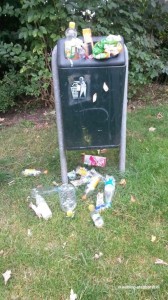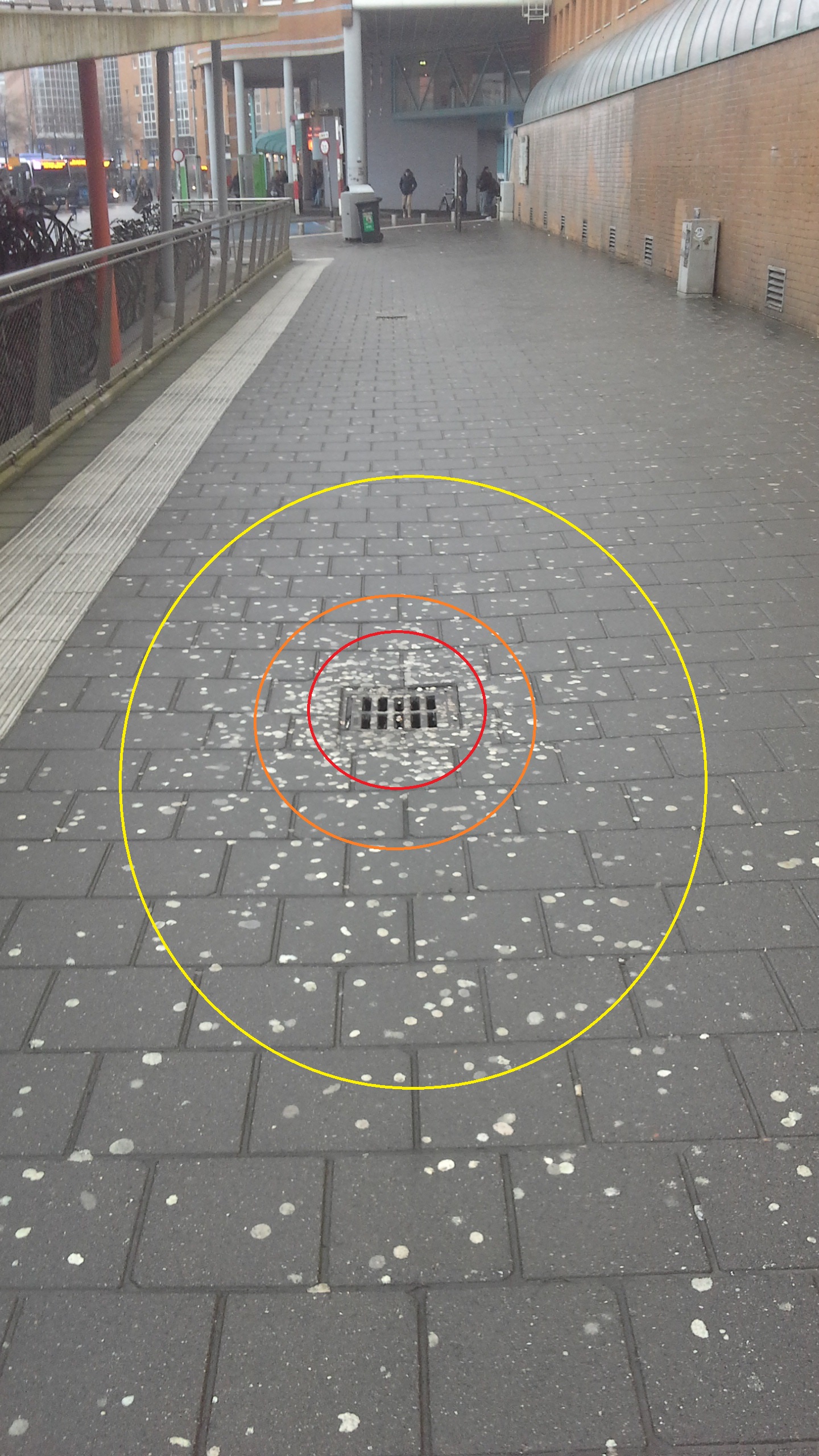I love walking around a city and observe people, and observe how people interact with the urban environment. In the same way you would if you were to study a group of monkeys in their natural habitat. And just like with monkeys the chance of spotting a human doing something really interesting is small. But they leave trails, you just need to figure out how to look. Here are some examples.
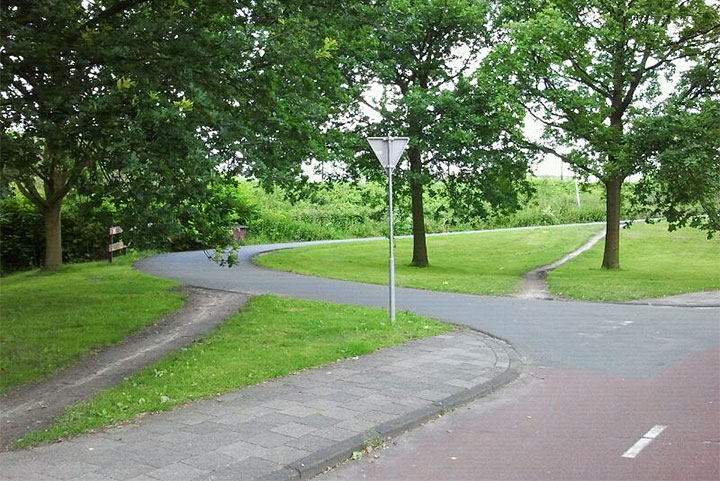 First the well-known “Dutch cross”, picture on the left, or the “I-know-the-city-build-a- sidewalk-here-but-I-want-to-go-this-way-trails”. If anything, this show how incredibly lazy humans are. And how often city planners fail to acknowledge this. And remarkable as humans are, one of them managed to make money on photographing these things.
First the well-known “Dutch cross”, picture on the left, or the “I-know-the-city-build-a- sidewalk-here-but-I-want-to-go-this-way-trails”. If anything, this show how incredibly lazy humans are. And how often city planners fail to acknowledge this. And remarkable as humans are, one of them managed to make money on photographing these things.
The engineer in me finds it interesting to see how much time we save by using these trails instead of the actual sidewalk. If we take the photo below the question would be “how much time do I save by in stead of walking from A to B to C, I would walk directly from A to C? “You can see there is a slight curve in the A-C route (making it less efficient as it could be!), but I will assume a straight line. The red tiles are 40 cm broad, making A-B around 10 meters, the same will be assumed for B-C, making the route A-B-C 20 meters. Using pythagoras theorem A-C is around 14 meters, this means you walk 6 meters less when you choose the trail. The average walking speed is 5 km/h, so you saved a total of 4.32 seconds. Congratulations! If we put this in more economic terms, 834 people would have to use this trail when needing to get from A to C to save one hour.
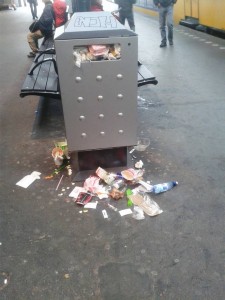 A second example is how humans handle their waste in public. In the Netherlands you can find public trash cans in many places, along roads, in parks, train stations, bus stops and this system is functioning reasonably well.
A second example is how humans handle their waste in public. In the Netherlands you can find public trash cans in many places, along roads, in parks, train stations, bus stops and this system is functioning reasonably well.
However, sometimes you want to throw something away, but the nearest trashcan is full. Or if you are at the train station, all of them are. There is a silent universal rule that instead of keeping your waste with you until you find another trash can, you put it on top of the trash can. You get something like in the photos. In my eyes this can mean 2 things, either “I am too good for carrying my waste any further, our paths must separate here, from now on it is the problem of the public servant who takes care of the trash”, or you have chosen to send a message to the city, saying “I have more waste than you are taking at the moment, please empty this can more often or build a bigger one”. At which the city will probably reply: “stop producing so much waste, or start paying more taxes”, but more nuanced.
Related to waste is gum. The lovely things you chew on to freshen your breath and spit out of your mouth at the most convenient moment. 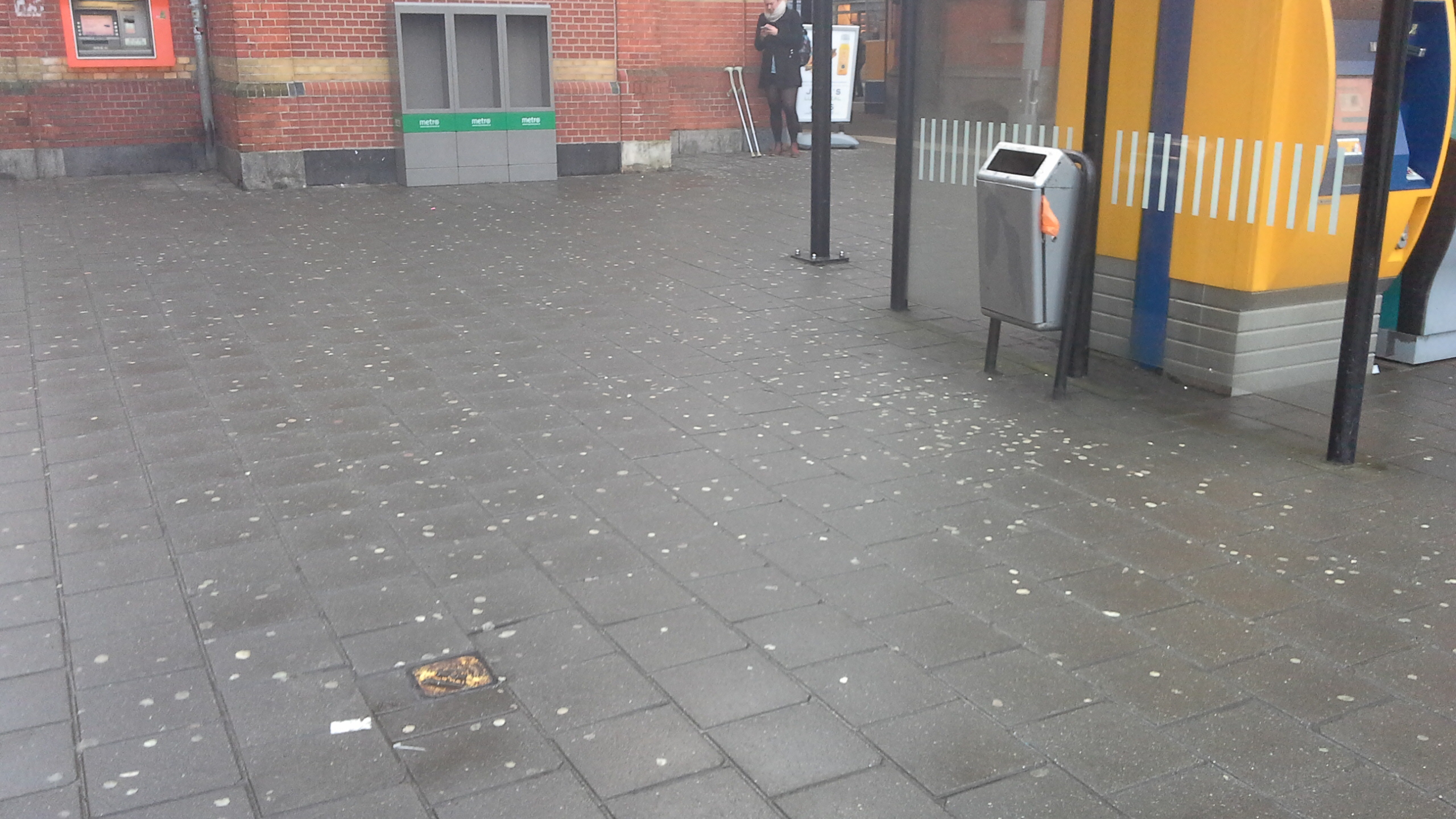 If you look at the photos you can see humans are trying to get rid of their gum in a somewhat “responsible” manner, they seem to be aiming at the sewer and the trash can. But either they are incapable of actually hitting the target, or it is part of their lazy character and a culture of 60% result is sufficient. You could do an analysis to see how much of the gum (../100) is hitting the red zone, and use this make a design for humans to spit their gum at, as it should not go into the manhole and sewer.
If you look at the photos you can see humans are trying to get rid of their gum in a somewhat “responsible” manner, they seem to be aiming at the sewer and the trash can. But either they are incapable of actually hitting the target, or it is part of their lazy character and a culture of 60% result is sufficient. You could do an analysis to see how much of the gum (../100) is hitting the red zone, and use this make a design for humans to spit their gum at, as it should not go into the manhole and sewer.
A well, human nature… The ultimate question is can we learn from our behaviour and improve it, or should we accept it and improve the design?
Hoping to hear from you, Natasja



